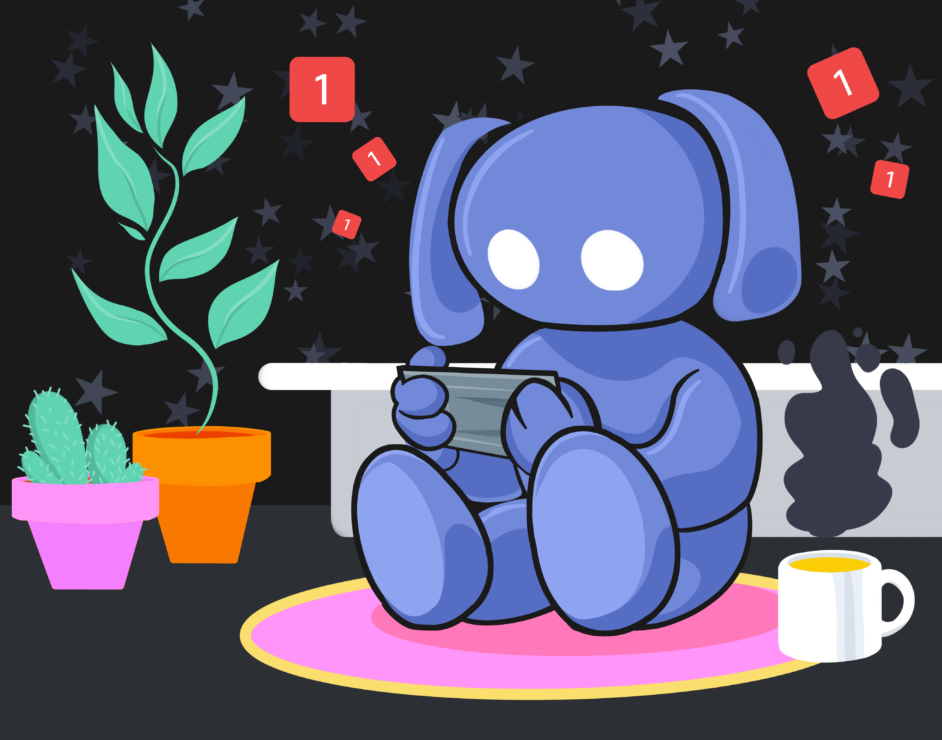How students are digitizing their campus community

Discord is often associated with gaming, but this year students are using the platform to build networks of much-needed support. Sue Kim, a second-year biomedical engineering student, started a Discord server for engineering and computer science students. According to Kim, that server helped foster friendships with a number of people who she has never even met in real life.
“It’s kind of bizarre that we have friends that we’ve never met before, but it’s really cool,” said Kim.
Kim, along with Bryce Edwards, who is a fourth-year economics student and the Director of Community for the Economics Course Union, hope their Discord servers connect students for schoolwork and socializing. Kim created the engineering and computer science server in 2019, but altered it in the summer of 2020 in anticipation of an online school year, while Bryce just built the Economics Course Union server this summer.
Over the course of the pandemic, life has changed drastically for almost everyone, including post-secondary students, who now have to contend with online classes, tutorials and study-groups. Now that much of the academic experience takes place on digital platforms, building lasting friendships with classmates can be difficult. As a solution to the challenges, some UVic students have turned to Discord to stay connected.
Discord is an online platform where users can create groups to communicate via voice and video calls, as well as via text and multimedia messages.
There are other applications, like Slack, which are used for a similar purpose. Edwards explained that Slack is more for team communications whereas Discord invites a more relaxed environment.
“Discord seems more free-flowing and more receptive to how a community might function,” Edwards said. “I wanted to really characterize the feeling of being comfortable in a digital community.”
When Kim created the engineering and computer science Discord server, she wanted to create an organized place that would provide academic and social support. She anticipated that the pandemic would deprive students of normal opportunities to socialize. Kim thought that Discord was the perfect solution — especially for new and incoming students.
However, the server is about much more than just connection. Along with her team of six other students, Kim aggregated a variety of university services, including emergency hotlines, counselling and mental health resources, engineering and computer science clubs lists, and a list of course prerequisites.
The server also has one channel per course. A channel is essentially a group, allowing students to interact with classmates about upcoming exams and homework. There are also channels for music recommendations, group movie watching and fitness, among many, many others.
All of the hard work that Kim and her team have put into their server has paid off. Kim has received great feedback and compliments about how the server is run. And, since first creating the server, Kim has seen an increase from about 600 to 2 500 members.
The engineering and computer science server was recently accepted into Discord’s exclusive partnership program for exemplary communities. As a reward, Discord provides free resources to increase server personalization, among other things.
Using some of the rules from the server that Kim created, Edwards built the Economics Course Union server to foster a fun and effective community.
“University right now — or, university ever — is not just about providing education to students, it’s about providing some type of community,” he says.
Edwards created the server to provide a digital version of some of the services that the Economics Course Union offered before the pandemic, like peer-tutoring, and, also, to make sure that students were keeping connected. Edwards has seen the server grow to just over 200 members.
Edwards is still figuring out what does and does not work with the Economics Course Union server, as it is not getting as much traction as he would have liked to see by now. He feels, though, that it will soon reach a critical mass, wherein users will feel comfortable enough to communicate more freely, thus creating a more active community. Most people have been using it to discuss course material, which Edwards feels is indicative of students finding it useful.
When asked about what advice they would have for how to create a functional Discord server, Kim and Edwards had a few pieces of advice. First, Kim said, “Have a clear vision of what exactly you want your community to look like in the short-term and the long-term, and stay true to those goals … Otherwise, communities are really hard to build.”
According to Edwards, the environment must be set for the initial group members. In this way, the tone will be clear for members as the group grows in size.
In the end, Kim and Edwards have succeeded in creating digital communities that, for the most part, seem well-received and useful. Though the future is uncertain, Kim, Edwards and others using Discord have proved that community and friendship are still possible, albeit virtually.
Students in the economics program can join the Discord server by following this link.
To join the engineering and computer science server, students can follow this link. Instructions for verification will appear once the student enters the server.








